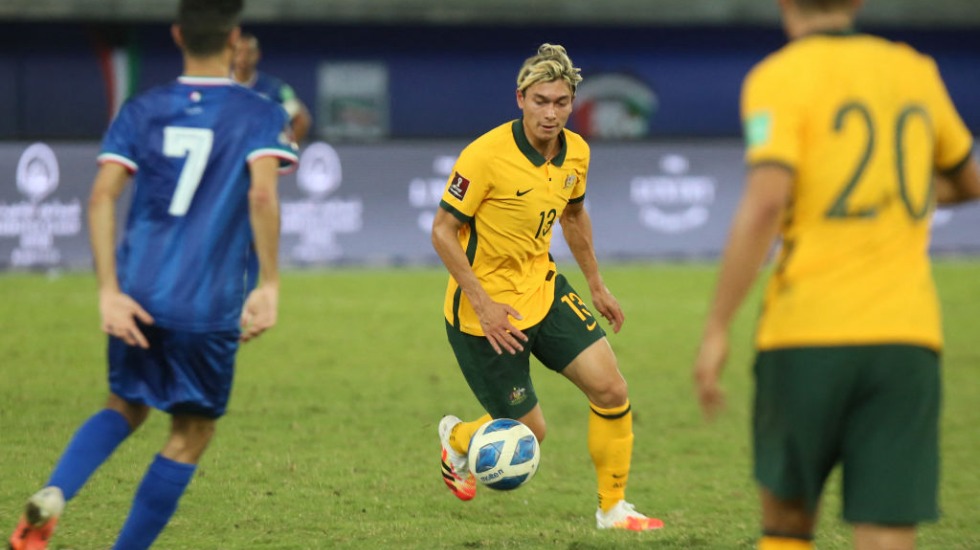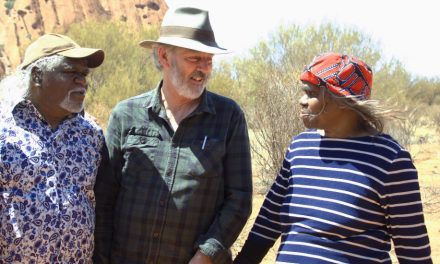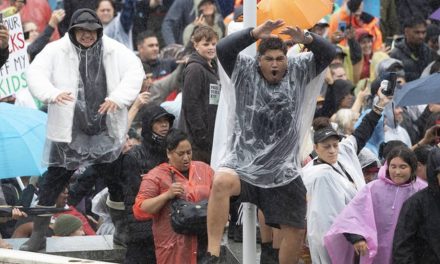Kenny Dougall in action for Australia during the Socceroos’ 3-0 win over Kuwait on Friday morning (our time). Photo: AFP
After an 18-month hiatus, the Socceroos returned to the international fold in the small hours of Friday morning with a 3-0 win over Kuwait as the AFC World Cup qualifiers for 2022 resumed.
It was the first of four games in 13 days for Graham Arnold’s team, and one more win (perhaps even this one) should be enough to see them safely through to the final round.
Before Friday’s resumption, the team had breezed through its group, hitting a total of 15 goals against Kuwait, Nepal and Chinese Taipei, with only Jordan offering resistance. Australia came through that test thanks to an Adam Taggart goal in November 2019 in Amman – the last time it was in action. It’s hard to see any of the teams in this particular section giving the Socceroos too much trouble.
But the road to Qatar is likely to become a whole lot trickier in the final round – with regional heavyweights Japan, South Korea, Saudi Arabia and Iraq all handily placed to progress. All opponents who have given the Socceroos trouble in the past.
Yet their toughest opponent could yet be the global pandemic.
Australia currently has some of the most stringent border controls in the world to keep COVID at bay, and we saw with the Australian Open tennis tournament how fraught with difficulty opening up – even on a limited basis – can be.
This presents Football Australia with a problem.
If crucial home advantage against much stronger opposition is not to be given away, then government will have to come to the party to help find a solution.
There are three international windows later in the year – September, October and November – during which Asian nations (including Australia) are due to play two matches, one home and one away, in each window.
Both state and federal governments are believed to be keen to help and try to make these games happen on home soil – but the risk is inflaming public sentiment against making sport an exception to the general rules.
FA CEO James Johnson says the governing body is working with the authorities to try and find the answer.
“We’ve held discussions with Federal Government and we are currently speaking with the New South Wales Government about the possibility of hosting our third-round qualifying matches for the World Cup on home soil,” says Johnson.
“Both have been exemplary in arresting the spread of COVID, and keeping our communities safe throughout this period. We welcome the opportunity to work with them and any support they can provide to bring our Socceroos home and host these crucial matches in front of our supporters.”
PLEASE HELP US CONTINUE TO THRIVE BY BECOMING AN OFFICIAL FOOTYOLOGY PATRON. JUST CLICK THIS LINK.
New South Wales is the preferred location because of its excellent record in keeping COVID at arm’s length, regarded as the “gold standard” globally. But the problem remains of how to move groups of players in and out of hubs, or bio-secure bubbles, without impacting either the local community, or their return to clubs both at home and abroad.
Yet the alternative is to relocate the Socceroos to another country – to set up a home away from home for a period that could be up to four months in duration to cover the three international windows. That represents a whole other level of complexity.
A-League players in particular couldn’t simply travel in and out for games due to the need to quarantine every time they return to Australia. This could have implications for the start of the next domestic season, and even lead to some players considering whether to look at playing their club football overseas.
If the government can find an accommodation to bring teams to Australia, they would likely train and play in a “bubble” and then leave four days afterwards, without any interaction with people outside.
But can home games be accompanied by fans inside the stadiums, to give the Socceroos the biggest possible advantage? That’s the next part of the equation.
The best way to achieve this may be to play inside as large a venue as possible – such as Stadium Australia – where fans could potentially be located in the upper tiers, safely away from the pitch, and where nets could be placed around the field to stop the ball going into the stands and coming into contact with supporters.
Finding the solution will be tricky and time-consuming. But the opportunity for Australia to open up on a limited basis may come through sport – and no team represents the national interest better than the Socceroos (and Matildas) as they attempt to qualify for the biggest sporting event on the planet.
In other news, Football Australia is set to announce a new television deal for the national teams and FFA Cup in the coming weeks. It’s believed the Round-of-32 Cup ties will be the first to be broadcast under the new deal.
For the first time this season, the A-League clubs that finish between ninth and 12th will play off for one remaining spot in the last 32 – FA will cover these games via their own social channels.











